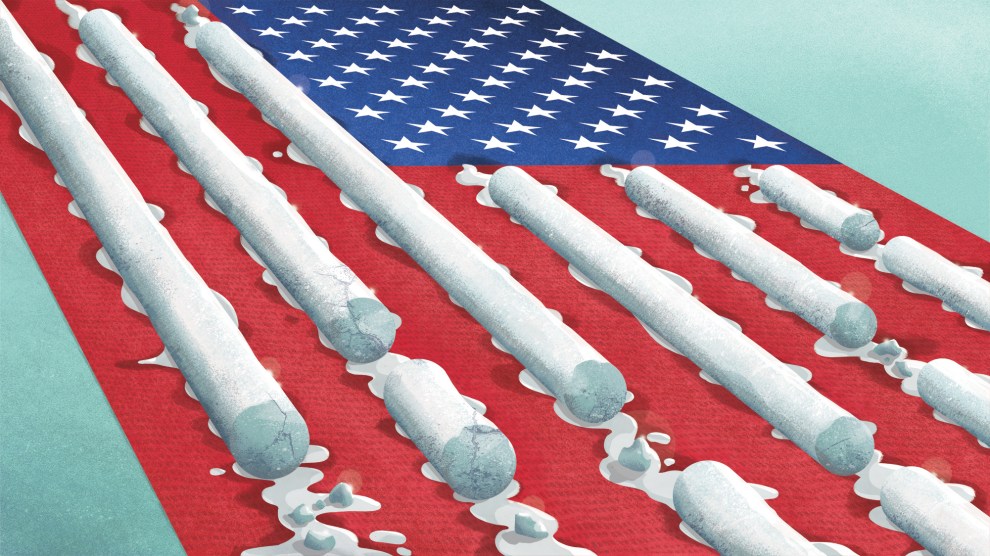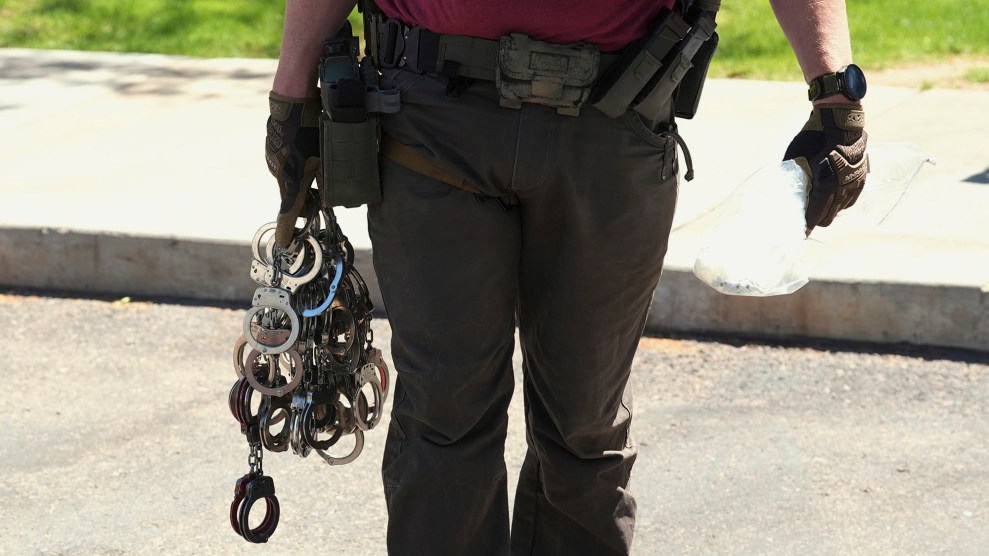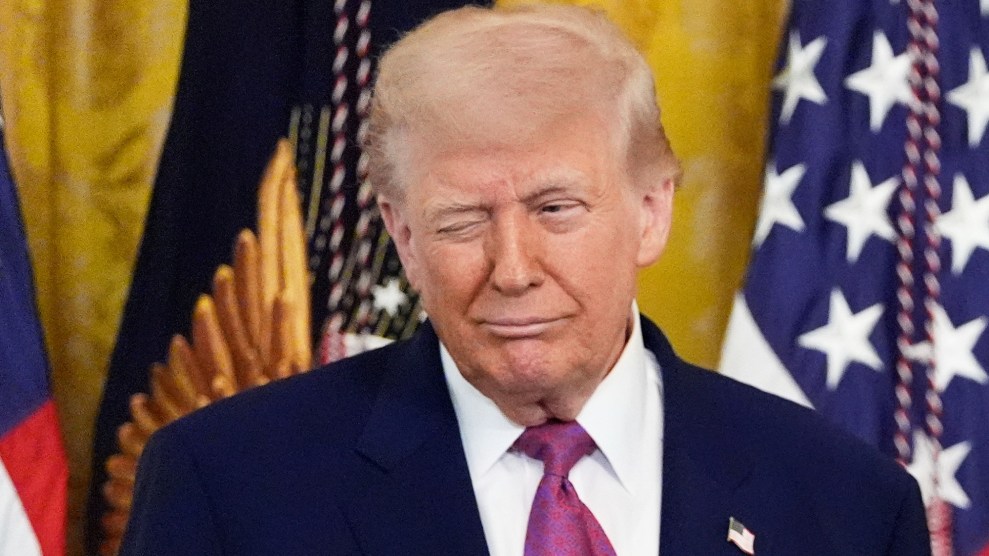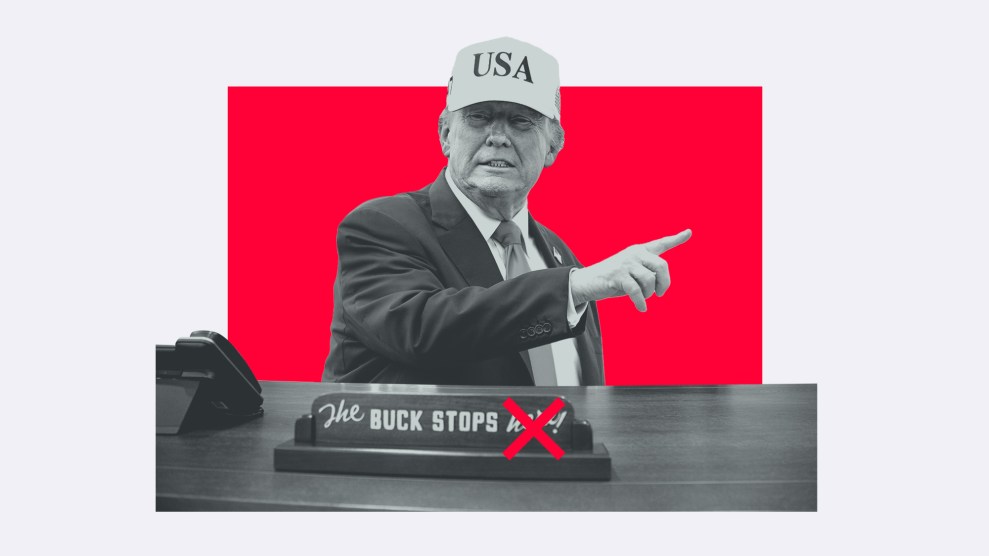“It was the best deal since Manhattan was sold for beads.” That’s what Indiana’s Republican governor, Mitch Daniels, told Barron‘s recently, referring to the privatization of the 157-mile Indiana Toll Road—a deal that netted the state $3.8 billion. Back when Jim Ridgeway and I wrote about this deal, and the larger infrastructure privatization trend that was being pushed along by the Bush administration and Wall Street (Goldman Sachs in particular), there was some question as to whether Hoosiers were getting a good deal. One local economist had estimated that the value of the road, under the terms of the state’s 75-year lease agreement with the Spanish construction firm Cintra and Australia-based Macquarie Infrastructure Group, could be as much as $11 billion. Surely he didn’t anticiapte a major spike in gas prices and an economic meltdown, factors that took a serious toll on toll revenues.
According to Barron‘s, which declared the infrastructure privatization boom all but dead, the MIG-Cintra investment is not panning out so well.
Indiana is looking particularly smart because toll-road revenue now seems less dependable than it appeared to be just a few years ago. “Toll-road traffic declines in this recession have been more severe than in any other post-war recession,” says Peter Samuel, editor of TollRoadNews, an online transportation Website. He says toll-road traffic is down 6% this year and revenue has been hit by recession-reduced usage by trucks, which often account for 50% or more of tolls.
The Indiana sale looks like a loser for the two buyers and a group of foreign banks that lent $3.5 billion to finance the purchase and ongoing capital expenditures. The Indiana Toll Road was leased to Macquarie and Cintra for 75 years, tantamount to a sale; the buyers also took a lot of risk in getting financing for just 10 years on that 75-year lease, leaving them vulnerable to refinancing risk in 2015.
There are merits to infrastructure investing because highways, ports, airports and even parking garages are long-lived assets with revenue that’s usually fairly predictable. As with any investment, however, price is critical. Pay 30, 40 or 60 times revenue for even a great asset, and returns are apt to be poor. For the Indiana Toll Road, Macquarie and Cintra anted up a stunning 40 times trailing annual revenue, and 60 times a measure of annual cash flow called earnings before interest, taxes, depreciation and amortization (Ebitda).
It was one of the most illogical prices paid for any major piece of transportation infrastructure during the bubble period of 2005 to 2007, but it wasn’t the only example. Other U.S. toll roads bought for inflated prices include the Chicago Skyway and the Dulles Greenway in Virginia, also bought by Macquarie.
So have we seen the end of privatization fever? Ken Orski, a privatization proponent who served on George W. Bush’s Transportation Policy Task Force, doesn’t think so. In a recent issue of his newsletter, Innovation Briefs, he writes:
The good news in your editor’s judgment is that, despite these recent reversals, the longer-term prospects for PPPs and private investment in infrastructure appear surprisingly good. A favorable policy climate at both the state and federal level is one contributing factor. The Mississippi, North Carolina and California legislatures have passed PPP-enabling legislation, suggesting that the sentiments among state legislators are running in favor of private investment in roads and other infrastructure. On Capitol Hill, the earlier signs of suspicion toward PPPs by certain influential lagislators have been replaced by modulated expressions of support…
Signals from the Administration are equally encouraging. U.S. DOT guidance on the discretionary $1.5 billion grant program included in the Recovery Act for projects of national/regional significance includes positive references to the role of private participation. Transportation Secretary LaHood, our sources tell us, has made it clear to recent visitors that PPP will have to be part of the mix in new transportation funding.

















